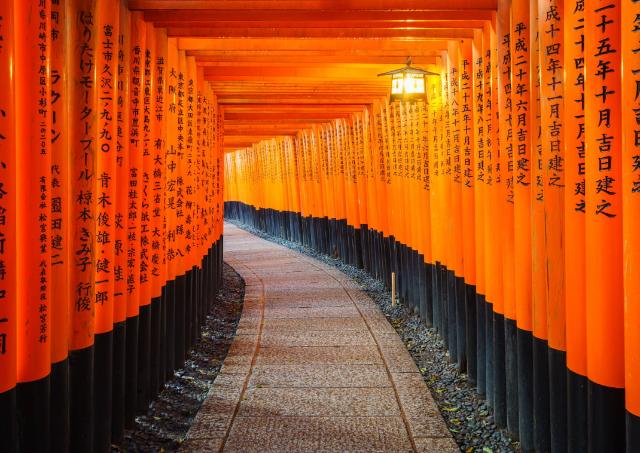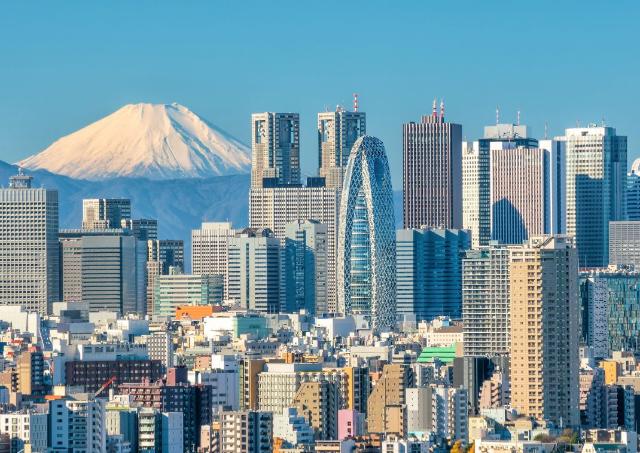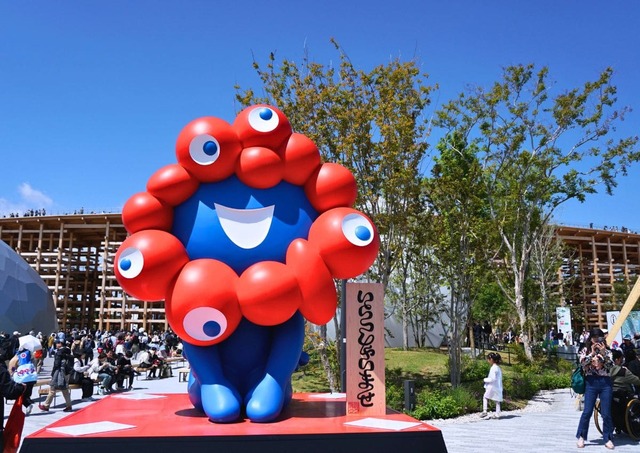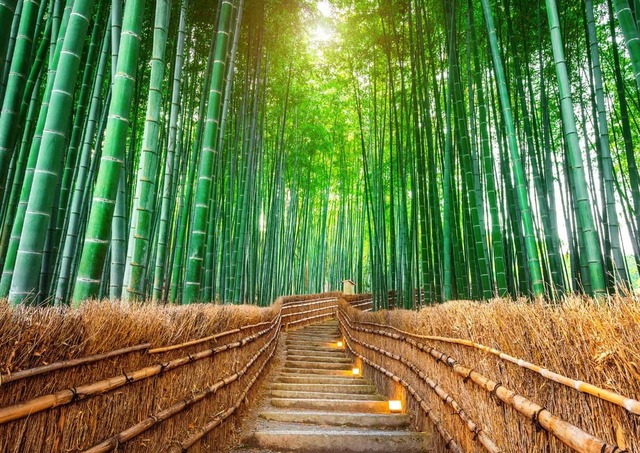Top 5 Mountain Experiences of Japan
With most of the island nation being covered in mountains and volcanos, forgetting your hiking boots would be a mistake.
Ah, the “Ring of Fire” – that ever-enthralling, destructive masterpiece that surrounds the Pacific Ocean with lava-filled floors and ranges of peaks and summits carved by millennia of powerful eruptions and shifting plates. Why would anyone ever visit these unpredictable places?
Simple: because they are some of the most breath-taking on the planet, and the entirety of Japan is engulfed in this fiery region. It’s no wonder why Japan is such a nature-lover’s dream destination.
In this breakdown, we’re going to throw out the top geological monsters worth scaling in the country based on their ease of ascent, things to see along the way and the view from the top. So, without further ado, let’s take out our trekking poles and start conquering this top five list of mountain experiences in Japan.
5. Mt. Takao, Tokyo
It’s a common misconception that Tokyo City is equal parts skyscrapers, equal parts mountains. Upon arrival, you may find that the Kanto Plain is very… plain! Fear not, however, as there’s still a way to get your mountain fix before flying out of the capital.
Mt. Takao is located in western Tokyo prefecture just an hour train ride from Shinjuku in Hachijoji. It’s a popular nature escape for metropolitan residents. Conquering Mt. Takao is an easy few hours up and down with lots to see and do with varying activities depending on your hiking course. For those with even less of an afternoon to spare, there’s also a ropeway option to the summit.
At roughly 600 meters, Takao can be scaled comfortably in under two hours and has course options that are either paved with numerous tengu (often depicted as bird-like spirits with long nose) shrines and mountainside restaurants or off-the-beaten-path courses with natural surroundings with few other distractions. There’s really something for everyone on Takao.
Oh, and the view from the top? Not only is Mt. Fuji visible on a clear day, but the sight of the neighbouring peaks of Tokyo and Yamanashi prefectures make it worth even the more challenging courses.
4. Mt. Kinka, Gifu
Only a few stops from central metropolis Nagoya lies the capital of Gifu Prefecture. Barely a fifth of the population of its enormous neighbour, Gifu City lives quietly in Nagoya’s shadow. In the centre of the city, however, Mt. Kinka looks over the region with a particular ornament on top that has captured the vision of photographers of all skill level.
Mt. Kinka’s pros come from its proximity to a prefectural capital and its views from atop its peak which is best observed from the summit fortress, Gifu Castle. As seen from the mountain’s base, Gifu Castle peers over the city with stoicism begging for visitors to see it up close. That same base is also a popular spot for fall leaf viewing with its park of numerous ponds, gardens, bridges, and the Gifu Park Three-Story Pagoda.
Whether you choose to trek a course upward or take the ropeway, you’ll eventually be led past Kinka Squirrel Village where tourists can enter an enclosure to handfeed squirrels and mountainside restaurants with stunning views of neighbourhoods and rivers below. Without a doubt, the views available from Gifu Castle are some of the most magnificent in Japan. The local hills of the city take on a magnificent form in full view. A patch of the Japanese Alps can be seen on clear days here, as well. Without a doubt, the scenery from the top is worth traveling a great distance for.
3. Mt. Misen, Hiroshima
How could a World Heritage mountain not make the list?
While Itsukushima (sometimes called Miyajima) may not need much of introduction with its especially famous shrine and giant red “floating” torii (gate), the island’s tallest peak is also worth notoriety.
A part of Hiroshima Prefecture in west Japan, Itsukushima’s Mt. Misen starts with a casual stroll around its base with globally known sites, friendly wild deer, and especially delectable oysters and ends with a panoramic view of the Seto Inland Sea and its islands that is unparalleled.
A nationally known area for fall foliage, Mt. Misen can be conquered with or without the ropeway, but the peak can only be reached on foot. Along the way, shrines of local significance mark rest areas for those ascending like Reikado – a building that protects a centuries old flame that once lit the now ever-burning torch in Hiroshima City’s Peace Park.
While the scenery offered near the final ropeway station is worth a look, the only way to get the full 360-degree experience is by hiking another half an hour up to the peak lookout area. All in all, conquering Mt. Misen by any method is only of a moderate level of difficulty.
2. Mt. Daisen, Tottori
Mt. Daisen is a world all its own.
Located in western Tottori prefecture, not too far from Shimane’s capital, Matsue, Mt. Daisen is the tallest mountain of the Chugoku region. Mt. Daisen takes on many forms depending on where it’s being observed from. Sometimes rugged like the alps or conical like Fuji, there’s a lot to be enjoyed on a hike up Daisen. While there aren’t many amenities available, Daisen is dotted with a number of dated shrines, forests, and viewpoints.
Most of the way up Daisen is either paved or clearly marked with wooden stairs and platforms. At around a five-hour trek, it’s occasionally a steep venture. Still, the morning mist of Daisen offers an eerily beautiful world to explore, and it’s an often-clear view of the area from the top. Although a good distance from any major metropolis, it’s worth a trip when in west Japan.
If you’re looking for just a view of the mountain, lying in the cow ranch fields of the Daisen Makiba Milk no Sato with a Daisen milk ice cream is most recommended.
Extra: Mt. Fuji
Experience, you say? Indeed. The famous Mt. Fuji is climbable, but the summit is only accessible in the summer months when Fuji is without its particularly lovely snowcap – specifically, from July to September.
As the highest peak in Japan, conquering Mt. Fuji could be many trekkers dream. As Fuji is a nearly perfect cone-shape, trekkers don’t need any climbing gear either – only general hiking attire. Poles are also recommended.
To reach the peak at the ideal time (sunrise), visitors need to stay overnight on the mountain which is typically in sleeping bags in rooms of many other hikers. The real reward of climbing Fuji comes from making it to the finish line and enjoying the sight of a sunrise over a sea of clouds. There, unfortunately, isn’t much to enjoy on the way up. Still, it’s a sight to see for those dreaming of such a feat.
1. Yakushima, Kagoshima
While easily the most distant from the capital on this list, Yakushima is an absolute trekkers paradise. An island south of Kagoshima prefecture, the most southern mainland prefecture in Kyushu, Yakushima is a UNESCO island full of natural splendor with mountains full of ancient cedar forests, ravines, waterfalls, wildlife, and most within single day trips.
The Shiratani Unsuikyo course is probably the most popular as it’s been dubbed the Princess Mononoke Forest after the impact it had on writer and director, Hayao Miyazaki, concerning his animated film of the same name. The course is well marked but still allows for full immersion of the cedar forests of ancient trees covered in moss and fern and often shaped like mythical beasts. It also leads to a lookout boulder on the side of a cliff that allows for an exceptional view of the central island. Even on rainy days, the forest’s moss glistens when wet, and the lovely scent of cedar is particularly potent.
Likewise, Jomon Sugi, the oldest tree in Japan, can be visited via the Arakawa Trailhead and is a trek that often requires overnight camping to reach/return. While the former mentioned course is a comfortable four hours each way, reaching this particularly ancient tree (over 2,000 years old) often takes more daylight hours than offered. For ambitious hikers, however, this is the course to take and the view to see. As the highest peak on the island, the view is as good as it gets.
There’s never not a good time to visit this incredible island.
Bags Packed?
Book it with us! We have Guided Tours departing every year, check them out.
More interested in seeing mountains from a distance? Check out our Japanese Alps tour!
See a few of these destinations and more on our Highlights of Japan tour!




